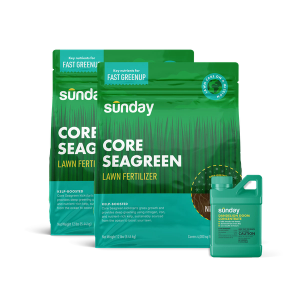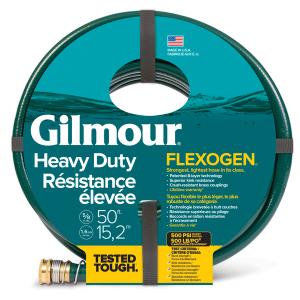Grow your roots
Through a combination of watering and mowing practices you can encourage your roots to work harder for a more self-reliant lawn. Deeper roots are more resourceful. They reach further for water and nutrients in your soil requiring less care and inputs.
- Mow only 30% of your grass blades' length. The longer you let your grass grow the longer your roots will grow. Approximately, for every 1" of grass blade you see above the soil you will have 1" of roots below.
- Water less frequently and deeper. It encourages deep, expansive root growth.
ECO BONUS: A deeper root system will allow your lawn to sequester and store more carbon from the atmosphere.
Grasscycle
Leave the grass clippings on your lawn after mowing. This is called grasscycling or mulch mowing and it allows your lawn to recycle nutrients back into the soil naturally and reduces yard waste.
- Ditch the bag! Remove the bag from the mower prior to cutting your grass.
- Leave grass clippings right where they fall when you mow your lawn.
- Grass cycling works best when you cut only a third of the grass blade at a time and your mower blades are well sharpened. This will ensure grass clippings are small pieces that will breakdown into your soil quickly.
- You can do the same with leaves in the fall too by leafcycling.
ECO TIP: If grass cycling isn't an option, you can also compost clippings or use them as garden mulch.
SUNDAY BONUS: Through soil testing and targeted nutrients, our lawn plans feed your soil and grass just what it needs without waste or runoff.
Rethink your yard space
Adding diversity to your yard will strengthen your ecosystem and bring texture, color, and beauty.
- Evaluate your lawn activity needs. Keep what you use and consider planting areas of native plants, flowers, or trees for the rest.
- Our favorite resources for finding native trees and plants is your state extension office or local native plant society.
ECO BONUS: Native plants, flowers, and trees are adapted to your local climate and will provide much-needed habitat for local pollinators and birds.
SUNDAY BONUS: Every lawn plan includes wildflower seeds hand-selected to support pollinators and a healthy ecosystem in your backyard. And We have clover seed for an even more eco-friendly lawn.
Skip harsh chemicals
After decades of dependence on pesticides, herbicides, and other “quick fixes”, it’s time to build a more rewarding relationship with our yards for ourselves and for our planet.
- Pulling weeds out by hand is our go to. It’s easier to keep weeds from spreading if you catch them early before roots grow deep and flowers become seeds.
- If pulling them up by hand isn’t an option or isn’t working, opt for herbicidal soap or iron-based weed control products.
ECO TIP: Remove flowering heads on weeds before spot-treating leaves to protect pollinators from foraging on treated flowers.
ECO TIP: Seeding thin or bare spots is the new pre-emergent without the chemicals!
Walk and watch
It's easy to get caught up in growing a perfect lawn. Instead we're asking you to take a little step back. Being watchful will help you get to know your lawn ecosystem and catch imbalances early on.
- Building a practice of weekly weed walks will help you keep an eye on things.
- When you catch weeds, thinning, or other issues earlier, it's easier to address them with a more environmental approach like hand-pulling and reseeding.
SUNDAY TIP: Remember to enjoy it! Here are some of our favorite ways to have fun in the yard.
Eco benefits of lawns
Your lawn can help the environment. Small changes will help make it even better, but let's take a minute to celebrate the great work your little patch of grass is already doing for the planet.



















